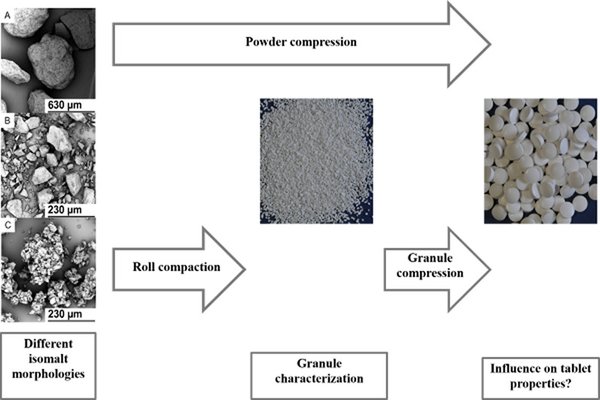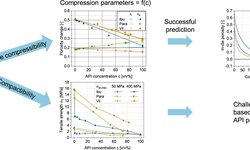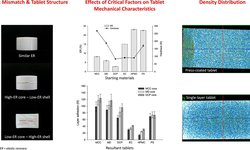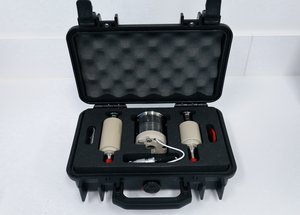Scientific papers
The impact of varied isomalt particle morphologies on the properties of dry granules and tablets was explored. Primary crystals, milled particles, and agglomerates underwent tableting after roll compaction/dry granulation and were compared to directly compressed powders. Subsequently, changes in tabletability were assessed. Particle size distribution and specific surface area were measured for both powders and granules. The influence of specific compaction forces on granule and tablet properties was also examined. Milled and agglomerated isomalt yielded products with satisfactory quality attributes. Agglomerates demonstrated effective particle size enlargement even at low specific compaction forces. Across all morphologies, the specific surface area increased during granulation, albeit to varying degrees. Production under high compaction force or tableting pressure led to the breakdown of initial agglomerates, resulting in product characteristics similar to those produced from milled raw material. High tableting pressure particularly caused overpressing of isomalt tablets, especially in the case of agglomerates. Primary crystals investigated were unsuitable for both direct compression and roll compaction/dry granulation. Milling effects dominated compaction, resulting in granules smaller than the starting material. In summary, milled and agglomerated isomalt proved to be effective as a filler/binder in roll compaction/dry granulation.

Comments
No comments posted yet.
Add a comment















